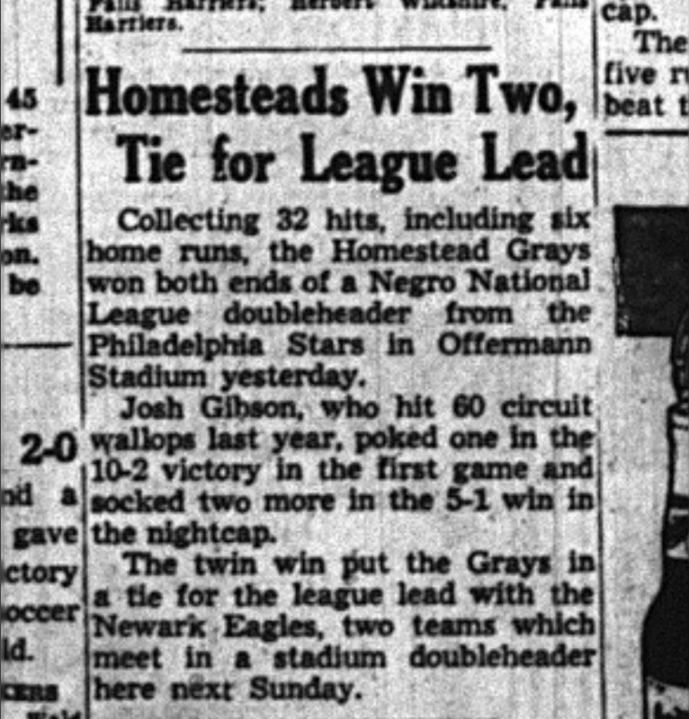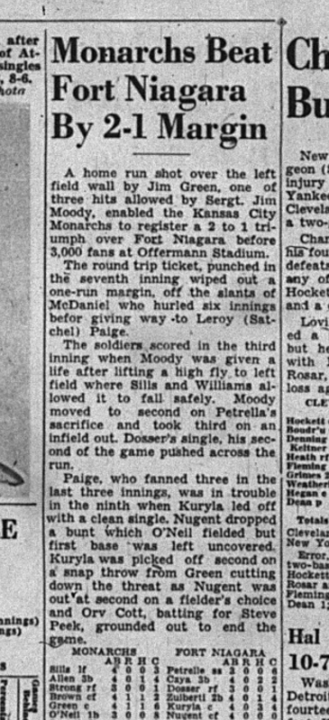Did you know that Hank Aaron was discovered in Buffalo?

- Oops!Something went wrong.Please try again later.
- Oops!Something went wrong.Please try again later.
BUFFALO, N.Y. (WIVB) — Did you know that Hank Aaron, one of baseball’s immortals, was discovered in Buffalo?
It’s all part of the city’s rich Negro League baseball history, one that includes some of the greatest Negro League players ever, including Josh Gibson and Satchel Paige.
The story begins on May 25, 1952, when an 18-year-old Aaron was playing for the Indianapolis Clowns, known as the Harlem Globetrotters of baseball, as they barnstormed across the country with their comic acts and tricks while playing. The Clowns are also widely recognized as being the first men’s professional team to have female players, with Toni Stone, Connie Morgan and Mammie “Peanut” Johnson all spending time with the team in the 1950s.
The Clowns, who were based in Buffalo at the time, were playing a doubleheader at Offermann Stadium, which was located at the corner of Michigan Avenue and East Ferry Street. Despite being based in Buffalo, the Clowns would only play about six games a year at Offermann, with the team’s offices based nearby. That arrangement went on from 1951-1955, which was after Jackie Robinson had broken baseball’s color barrier, so the Clowns were seen as more of a minor league team.
According to local baseball historian Brian Frank, a Boston Braves scout named Dewey Griggs was in attendance for the doubleheader and advised the right-handed hitting Aaron to hit with his right hand on top of his left hand, rather than the other way around.
Aaron made the switch and went 7-for-9 in the doubleheader with a home run. Less than two weeks later, Aaron signed with the Braves for $10,000, and the rest is history. Aaron went on to become Major League Baseball’s all-time home run leader, a record he owned until 2007.
However, Hank Aaron being discovered here is just the beginning of the story of Negro League baseball in Buffalo.
Negro League baseball in Western New York dates back to as early as 1934. That fall, a group of Buffalo Bisons players stuck around after the season to play a series of unorganized games. As part of that, they played Josh Gibson, who is estimated to have hit somewhere between 800 and 1,000 home runs in his professional baseball career, and his Pittsburgh Crawfords.
They also played against the Homestead Grays that fall, another well-known Negro League team. Ray Brown, now a member of the Baseball Hall of Fame, took the mound for the Grays in a game they won 5-0.
Gibson returned in May 1939, hitting three home runs in a doubleheader at Offermann Stadium for the Grays.

Aaron and Gibson were not the only baseball legends to take the field in Buffalo around that time.
Enter Satchel Paige, the legendary pitcher who took the mound for five decades and also landed in the Baseball Hall of Fame. He pitched here as early as 1942, when World War II soldiers stationed at Fort Niagara played a series of games against the Kansas City Monarchs that August.
According to Frank, back in those days, many Negro League teams would barnstorm. Paige was a big attraction so he would only pitch a few innings per outing to keep him fresh and able to pitch nearly every day. According to a newspaper clipping from the Buffalo Courier-Express on Aug. 29, 1942, Paige pitched three innings at Offermann Stadium the day prior.

Speaking of teams barnstorming across the regions they were based in, Buffalo was a common stop for squads based in the Rust Belt.
The Pittsburgh Crawfords were a common team that played games in Buffalo over the years, but a more familiar team was the Cleveland Buckeyes. The Buckeyes were a successful team in their nine years of existence from 1942 to 1950, winning the Negro American League in 1945 and 1947, going on to win the Negro League World Series in a sweep of the Grays in the former of those years.
The Buckeyes would play seven or eight games a year in Buffalo. This would loosely be around 10% of the entire schedule, as the Buckeyes would only play around 80 games per season. Cleveland’s best player in those days was Sam Jethroe, a centerfielder who went on to win the 1950 National League Rookie of the Year award as a member of the Boston Braves as a 33-year-old. He played three full seasons in Major League Baseball before ending his career in 1954 after playing two games with the Pittsburgh Pirates.
Games at Offermann Stadium over the years would usually attract around 5,000 people in a stadium that held around 15,000.
It’s well-known that there is a rich history of baseball in the Queen City, and the legends of the Negro League days, from Hank Aaron, to Josh Gibson, to Satchel Paige prove to be a big, and maybe unknown, part of it.
So the next time you’re catching a game at Sahlen Field, you can know that the Bisons aren’t the only team that has called Buffalo home.
WIVB Sports
St. Joe’s, Kenmore East, Orchard Park claim high school hockey crowns
Quick start propels Canisius to 69-59 win over Niagara
Connor Clifton’s first goal as a Sabre lifts Buffalo to 2-1 win over Blue Jackets
Kansas City Chiefs sign former Bills punter Matt Araiza: reports
Did you know that Hank Aaron was discovered in Buffalo?
Aidan Joly joined the News 4 staff in 2022. He is a graduate of Canisius College. You can see more of his work here.
For the latest news, weather, sports, and streaming video, head to News 4 Buffalo.

